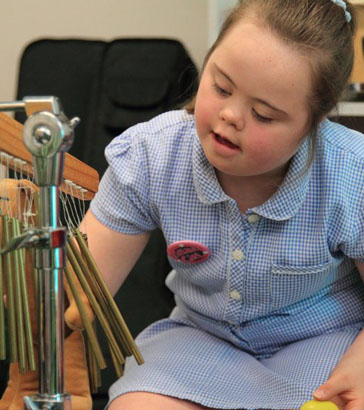
Over the last 20 or so years the concept of 'quality of life' has been used increasingly in working with adults with disabilities (see BILD 1997, Rapley 2003, Cummins 2005).
Part of the interest has been in measuring quality of life in relation to health and social policies and practice, e.g. assessing whether elderly people living in their own homes have a better quality of life than those living in care homes.
More recently it has been used in work with disabled children (Turnbull et al 2003).
Level B looks at a number of things that can help you to consider how quality of life for children and their families might be improved:
- The different aspects of quality of life
- The difference between an individual and a social model of disability
- The importance of pupil voice, and
- The role of other professionals who work with the child.

Quality of life has been defined as:
'General feelings of well-being, feelings of positive social involvement and opportunities to achieve personal potential.' (Schalock et al 2002 p.9)
Thinking about the quality of a child's life is important for many reasons. It can help you to:
- Empower children
- Think about what the child's life will be like when they eventually grow into an adult
- Understand the child from a number of different perspectives, and
- Appreciate that the child is part of a family and the wider community and is influenced by them.

The quality of a child's life affects and is affected by many areas of their well-being, including:
- Physical well-being
- Emotional well-being
- Self-determination (making choices and determining the course of events)
- Interpersonal relationships
- Social inclusion
- Personal development
- Material well-being, and
- Rights and privacy.
Listen to Harvey talking about the things he likes and dislikes.
Consider the areas set out on screen 3 in relation to Harvey's audio clip.
What can you say about the quality of his life?
Is there anything that might improve it?
of disability

Much of the research on quality of life has conceptualised it as a health related issue that is linked with the evaluation
of medical or social interventions.
However, in this training, improving quality of life is seen as a way to empower children.

British Institution of Learning Disabilities BILD (1997) Quality of Life Issues. 104, BILD Publication: Kidderminster.
Cummins, R. (2005) Moving from the quality of life concept to a theory, Journal of Intellectual Disability Research, 49.10, 699-706.
Rapley, M. (2003) Quality of life research. A critical introduction. London, Sage.
Turnbull, R., Turnbull, A., Wehmeyer, M. and Park, J. ( 2003) A Quality of Life Framework for Special Education Outcomes, Remedial and Special Education 24(2), 67-74.
